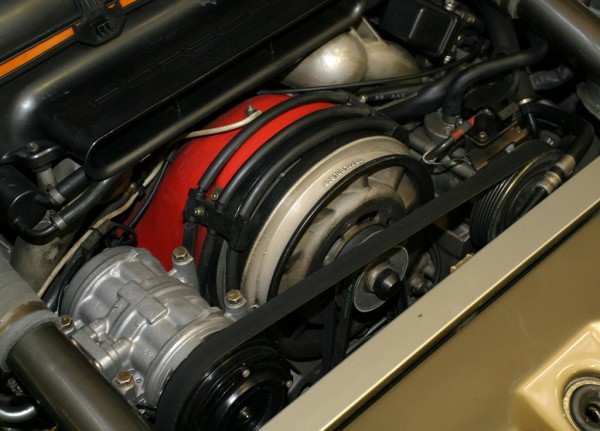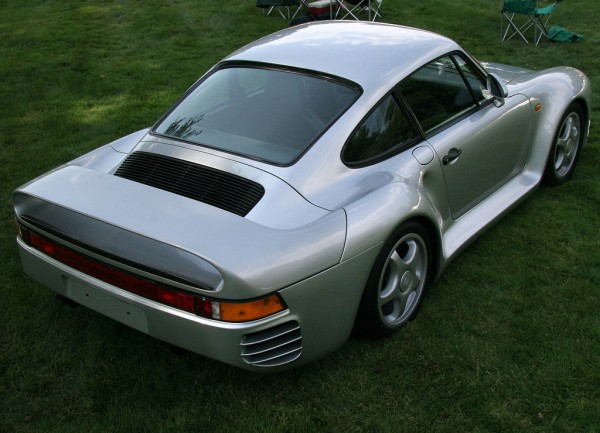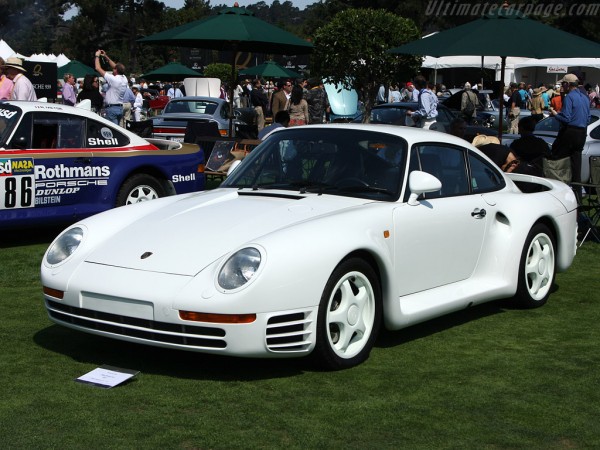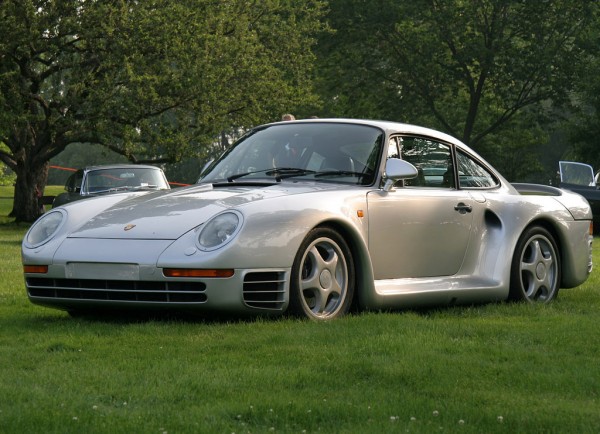 Porsche 959
Porsche 959
By using the basic 911 monocoque, the Porsche engineers had something familiar to start with. Much of the early work focused on the four wheel drive system, with which the Porsche engineers had very limited experience. Various systems were tested in combination with different suspension types. The hardware of the Porsche four wheel drive system was fairly straightforward; the real beauty lay in the software. The system was equipped with a computer that controlled the amount of drive to the front wheels, through a ‘PSK’ clutch fitted between the gearbox and the front differential. It compensated, for example, for the weight shift during acceleration. The driver was also given four settings to manually control the power sent to the front wheels in extreme conditions like ice or snow. The engineers also found that the four wheel drive system worked best with double wishbone front suspension instead of the McPherson struts normally found on a 911. To ensure that the front wheels had traction at all times, each side was fitted with twin coil spring over damper units. The rear suspension also consisted of double wishbones, however with just one coil/damper combo and an additional damper on each side. With its potential rally career in mind, the 959 chassis was equipped with four different mounting points for each wishbone to adjust the ride height. The pressure in the dampers could be adjusted from the cockpit.
While the four wheel drive system was still under scrutiny, attention was shifted to the exterior styling. Porsche was eager to show a preview of the company’s new Group B contender at the upcoming Frankfurt (IAA) show in September of 1983. The styling of the fully equipped, but non-running ‘Gruppe B’ concept shown in Frankfurt differed only in detail from the production 959. Apart from the shell very little from the 911 body was carried over. Light weight and low drag were top priorities for the designers and to complicate things further, the Porsche 911 shape had to be retained. They succeeded remarkably well to include the key features of the original 911 launched exactly 20 years earlier into a much wider and smoother body. The new shape was quite a departure from the contemporary 911 range and would form the basis for future 911 generations. The designers had hoped to get away with a wingless design, but wind tunnel tests showed that the rear end could not do without. They came up with a very elegant integrated rear wing. Thanks to a fully enveloping underbody the drag figure was kept down to a very competitive 0.32. All of the panels were crafted from either aluminum alloy or composite materials like Kevlar. The Kevlar panels were reinforced by steel frames. Even the 911 derived steel roof was replaced by a light weight plastic example.
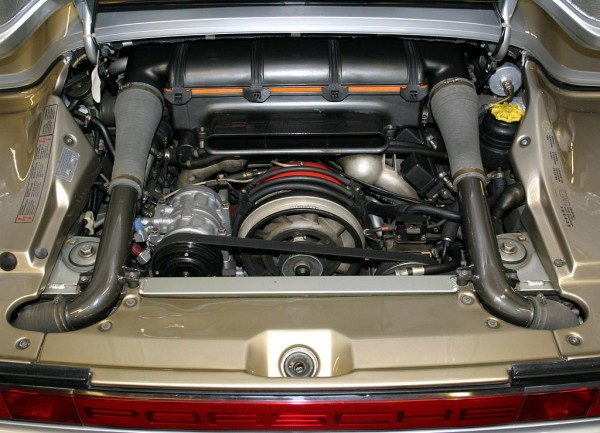
–
–
–

